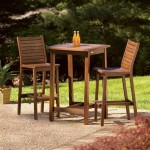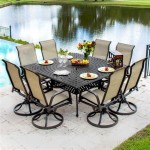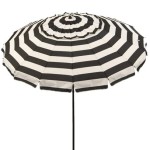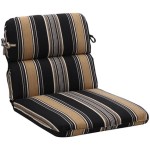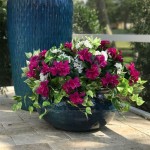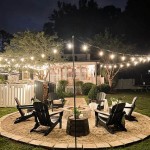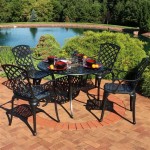Rustic Handrails For Outdoor Steps: A Guide to Materials, Design, and Installation
Outdoor steps, whether leading to a porch, garden, or lower level, require safe and reliable handrails. Rustic handrails offer a blend of functionality and aesthetic appeal, seamlessly integrating with natural surroundings and adding character to any outdoor space. The selection, construction, and installation of rustic handrails demand careful consideration of material options, design principles, and adherence to safety standards.
Material Selection for Rustic Handrails
The choice of material is paramount in determining the longevity, appearance, and overall success of a rustic handrail project. Several options exist, each with distinct characteristics that influence its suitability for outdoor applications.
Wood: Wood is a classic choice for rustic handrails, renowned for its natural beauty and workability. Different types of wood offer varying levels of durability and resistance to the elements. Cedar, redwood, and pressure-treated pine are commonly employed due to their inherent resistance to decay and insect infestation. Cedar and redwood, in particular, exhibit a natural reddish hue that weathers gracefully over time. However, even treated wood requires periodic maintenance, such as staining or sealing, to protect it from moisture and UV damage. The grain pattern and knot characteristics of wood contribute significantly to the rustic aesthetic. Rough-sawn lumber, retaining the texture of the saw blade, further enhances the rustic appeal. Reclaimed wood, sourced from old barns or structures, offers a unique character and environmentally friendly option.
Metal: While often perceived as modern, metal can be incorporated into rustic handrail designs through careful selection of finishes and fabrication techniques. Wrought iron, with its ornate detailing, evokes a sense of old-world charm. Steel can be powder-coated with textured finishes that mimic the appearance of aged metal or natural materials. The strength and durability of metal make it a reliable choice for high-traffic areas or regions with harsh weather conditions. Metal handrails can be combined with wooden posts or accents to create a balanced aesthetic. Consider using rivets or exposed fasteners for an industrial-rustic look.
Natural Stone and Concrete: While primarily used for steps themselves, natural stone or concrete can be integrated into handrail supports or bases to create a cohesive and rustic appearance. Stone posts, whether roughly hewn or carefully stacked, add a sense of permanence and solidity. Concrete can be stained or textured to mimic the look of natural stone or weathered wood. These materials are exceptionally durable and require minimal maintenance. Their weight, however, necessitates careful planning and structural support during installation.
Design Considerations for Rustic Handrails
The design of rustic handrails should complement the architectural style of the surrounding structure and the natural environment. The design must also fulfill code requirements for height, spacing, and load-bearing capacity.
Style and Aesthetics: The term "rustic" encompasses a range of styles, from rough-hewn and primitive to refined and subtly textured. A handrail constructed from unfinished logs with visible bark would embody a more rugged aesthetic, whereas a handrail made from smooth, stained cedar with wrought iron accents would represent a more refined interpretation of rustic design. Incorporating elements of nature, such as branches or twigs, can further enhance the rustic character. Consider the overall landscape design when choosing a style for the handrail. A handrail that blends seamlessly with the natural surroundings will create a more harmonious and inviting outdoor space.
Height and Spacing: Building codes typically specify minimum and maximum heights for handrails, as well as maximum spacing between balusters or other infill components. These regulations are designed to ensure the safety of users, particularly children. In most jurisdictions, handrails must be between 34 and 38 inches in height, measured from the leading edge of the step tread to the top of the handrail. The spacing between balusters should not exceed 4 inches to prevent children from squeezing through. It is crucial to consult local building codes before commencing any handrail project. Failure to comply with code requirements can result in costly rework and potential liability.
Ergonomics and Grip: The shape and size of the handrail itself should be comfortable to grip. A round or oval profile is generally preferred, as it allows for a secure and natural handhold. The diameter of the handrail should be appropriate for the intended users. A handrail that is too large or too small can be difficult to grasp and may compromise safety. Consider adding a secondary handrail at a lower height for children or individuals with mobility impairments. The surface of the handrail should be smooth and free of splinters or rough edges. A well-designed handrail will provide both safety and comfort.
Installation Techniques for Rustic Handrails
Proper installation is critical to ensuring the safety and longevity of rustic handrails. The installation process will vary depending on the materials used and the specific design of the handrail.
Post Placement and Footings: The posts that support the handrail must be securely anchored to the ground or to the steps themselves. The spacing between posts will depend on the length and strength of the handrail material. For wooden posts, it is advisable to use pressure-treated lumber that is rated for ground contact. Concrete footings should be poured to a depth that exceeds the frost line in the region. The posts should be plumb and level before the concrete sets. Metal posts can be anchored using concrete anchors or welded to metal plates that are bolted to the steps. Proper post placement and secure footings are essential for preventing the handrail from shifting or becoming unstable over time.
Handrail Attachment: The handrail should be securely attached to the posts using appropriate fasteners. For wooden handrails, screws or bolts are typically used. Countersinking the fasteners and covering the holes with wooden plugs can create a cleaner and more aesthetically pleasing finish. Metal handrails can be welded or bolted to the posts. Ensure that the fasteners are made of corrosion-resistant materials, such as stainless steel or galvanized steel. The handrail should be level and aligned properly with the steps. Any gaps or unevenness should be corrected before the fasteners are fully tightened.
Surface Treatment and Finishing: Once the handrail is installed, it should be properly treated and finished to protect it from the elements and enhance its appearance. Wooden handrails should be stained or sealed to prevent moisture damage and UV degradation. Choose a stain or sealant that is specifically designed for outdoor use. Metal handrails should be painted or powder-coated to prevent rust and corrosion. The finish should be durable and resistant to chipping or fading. Apply multiple coats of finish for added protection. Regular maintenance, such as cleaning and re-application of finish, will help to prolong the life of the handrail.
The successful implementation of rustic handrails for outdoor steps hinges on a thorough understanding of material properties, design principles, and installation techniques. Thoughtful consideration of these factors yields a functional and aesthetically pleasing addition to the outdoor environment, enhancing both safety and visual appeal.

Stone Steps On The Hill With Wood Handrail Outdoor Design

Rustic Wood Railing Outside

15 Outdoor Handrails For Concrete Steps With Examples Simplified Building

6 Rustic Railing Ideas Northern Log

Simple Exterior Handrail For Less Than 100 6 Steps With Pictures Instructables

Rustic Porch Build Stone Inlays Twig Railings Ep116 Outsider Cabin

Rustic Stairway

6 Rustic Railing Ideas Northern Log

6 Rustic Railing Ideas Northern Log

Hand Carved Maple Log Branch Railing Handrail Rustic Guard Stairway Trim Wood Home Decor Etsy

